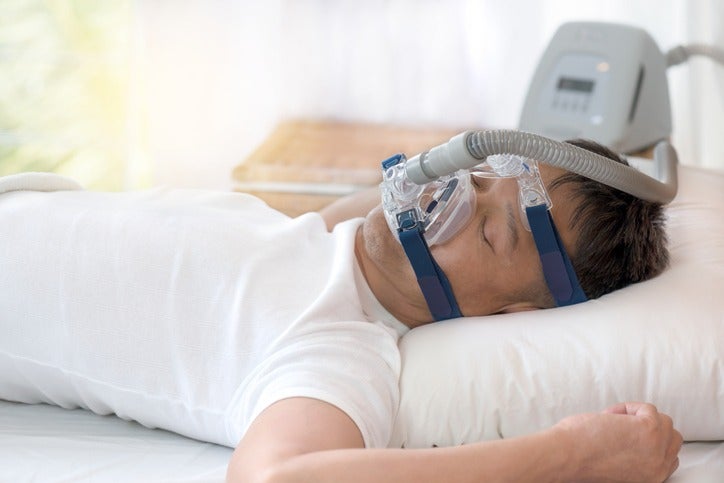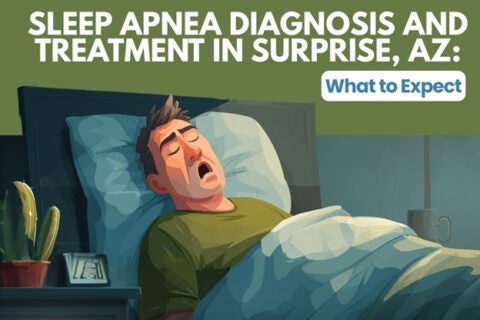Sleep Apnea Explained Diagnosis and Treatment Options
Sleep apnea is a troublesome sleep disorder that causes repeated interruptions in breathing during sleep. Early diagnosis and receiving the proper treatment are essential to managing this condition and preventing long-term complications. Understanding the symptoms, causes, diagnosis, and available treatment options can help those affected take the necessary steps toward better sleep and improved health.

What is Sleep Apnea?
Sleep apnea is a sleep disorder that hinders regular breathing while sleeping. These disruptions occur because the airway becomes blocked or the brain fails to send the proper signals to maintain breathing. As a result, the body is repeatedly forced to wake up to restore normal breathing. Since these interruptions often happen without a person being fully aware, many individuals with sleep apnea remain undiagnosed for years. The constant cycle of disrupted sleep prevents the body from entering deep, restorative sleep stages, leading to chronic fatigue, difficulty concentrating, and increased risks of serious health conditions.
What are the Types of Sleep Apnea?
There are three primary variations of sleep apnea, each with distinct causes and effects on breathing patterns:
- Obstructive Sleep Apnea (OSA): This is the most commonly diagnosed type of sleep apnea and occurs when the muscles at the back of the throat become too relaxed, causing a blockage in the airway. This obstruction forces the body to wake up momentarily to restore airflow, often accompanied by gasping or choking sounds.
- Central Sleep Apnea (CSA): Unlike OSA, which is caused by a physical blockage, CSA occurs when the brain doesn’t properly signal the muscles that control breathing. This results in pauses in breathing without any physical obstruction in the airway. CSA is less common but has been linked to certain medical conditions like heart failure and stroke.
- Complex Sleep Apnea: Also known as Treatment-Emergent Central Sleep Apnea (TECSA) or Mixed Sleep Apnea, this form of sleep apnea is a combination of both OSA and CSA. It occurs when a person who initially has obstructive sleep apnea develops central sleep apnea symptoms while receiving treatment with a CPAP machine.
Common Symptoms of Sleep Apnea
The signs of sleep apnea can vary, but some of the most common symptoms include:
- Loud snoring: Persistent, loud snoring is a sign of obstructive sleep apnea.
- Choking or gasping for air: Individuals with sleep apnea may experience episodes where they suddenly wake up gasping or choking for air.
- Excessive daytime sleepiness: Since sleep apnea prevents the body from getting restful sleep, people often feel excessively tired during the day.
- Morning headaches: Poor oxygen levels during sleep can lead to frequent morning headaches.
- Difficulty concentrating: Many people with untreated sleep apnea struggle with memory problems and focus-related issues.
- Mood disturbances: Irritability, anxiety, and depression can also result from chronic sleep deprivation caused by sleep apnea.
Causes and Risk Factors of Sleep Apnea
Several factors can lead to the development of sleep apnea, including anatomical and lifestyle-related causes. Some of the most common causes and risk factors include:
- Physical anatomy: A narrow airway, large tonsils, or an oversized tongue can increase the likelihood of airway obstruction during sleep.
- Obesity: Excess weight, particularly excess fat around the neck, can put excess pressure on the airway, increasing the risk of obstructive sleep apnea.
- Smoking and alcohol consumption: Smoking can cause inflammation in the airway, while alcohol relaxes throat muscles, and both can worsen sleep apnea symptoms.
- Family history: If sleep apnea runs in the family, you’re more likely to develop the disorder.
- Age and gender: Men are more prone to developing sleep apnea than women, and the risk increases with age.
Diagnosis of Sleep Apnea
Diagnosing sleep apnea requires a comprehensive evaluation, including a review of symptoms and sleep patterns. The most common techniques used to diagnose sleep apnea include:
- Polysomnography (PSG): This overnight sleep study is conducted in a sleep lab, where sensors monitor breathing patterns, brain activity, oxygen levels, and heart rate. It provides detailed information to confirm the presence of sleep apnea.
- Home Sleep Apnea Testing (HSAT): A simpler, at-home test that monitors breathing and oxygen levels while the person sleeps in their bed. While not as detailed as a lab study, it can help detect moderate to severe sleep apnea.
Treatment Options for Sleep Apnea
Effective sleep apnea treatment involves a combination of lifestyle changes, medical devices, and, in severe cases, surgery.
Lifestyle Changes
- Weight loss and exercise: Losing weight can significantly reduce sleep apnea symptoms, particularly in individuals who are overweight.
- Sleep position changes: Sleeping on the side rather than the back can help prevent airway blockage.
- Avoiding alcohol and sedatives: These substances relax the throat muscles, worsening symptoms of sleep apnea.
CPAP Therapy
- Continuous Positive Airway Pressure (CPAP): CPAP is the most commonly prescribed treatment for sleep apnea and is clinically proven to be effective for many patients. A CPAP machine delivers a continuous stream of air via a mask, keeping the airway open during sleep. While highly effective, some people struggle with the discomfort of wearing a CPAP mask.
Alternative Devices
- BiPAP and APAP machines: BiPAP (Bilevel Positive Airway Pressure) machines provide different pressure levels for inhaling and exhaling, while APAP (Auto-Adjusting Positive Airway Pressure) machines adjust airflow automatically based on breathing patterns. These alternatives are useful for individuals who cannot tolerate CPAP.
- Oral appliances: Custom-fitted dental devices help reposition the jaw to keep the airway open. These are a good alternative for mild to moderate sleep apnea.
Surgical Treatments
If other treatments are ineffective, surgery might be an option:
- Tonsillectomy or Adenoidectomy: Removal of enlarged tonsils or adenoids to clear the airway.
- Uvulopalatopharyngoplasty (UPPP): A procedure that removes excess throat tissue to prevent airway collapse.
- Genioglossus Advancement (GA): Repositions tongue muscles to prevent airway obstruction.
Managing Sleep Apnea Long-Term
Proper long-term management of sleep apnea involves regular follow-ups with healthcare providers, consistent use of prescribed treatments, and monitoring for any changes in symptoms. Sticking to a treatment plan is crucial to avoiding complications.
When to Seek Medical Help
Anyone experiencing persistent loud snoring, choking during sleep, or extreme daytime fatigue should seek medical evaluation. Untreated sleep apnea can lead to heart disease, high blood pressure, and an increased risk of stroke.
How Can Oasis ENT Help?
At Oasis ENT, we are dedicated to helping patients find relief from sleep apnea and its disruptive symptoms. Our team offers expert diagnosis and personalized treatment options to improve your sleep and overall health. Whether you experience loud snoring, fatigue, or other signs of sleep apnea, we can assess your condition through a comprehensive evaluation and sleep study. Our treatments range from lifestyle recommendations to advanced solutions like CPAP therapy.
Get Help With Sleep Apnea at Oasis ENT
If sleep apnea is affecting your rest and overall health, the specialists at Oasis ENT in Surprise, Arizona, can help. We offer expert diagnosis and personalized treatment options designed to support improved breathing and better sleep quality. Don’t wait—schedule a consultation today and take the first step toward a healthier, more restful life!
The information provided in this article is for informational and educational purposes only and does not constitute medical advice. It is not intended to diagnose, treat, cure, or prevent any disease or medical condition. Always seek the guidance of your physician or other qualified healthcare provider with any questions you may have regarding a medical condition or treatment.
Results may vary: Treatment outcomes and health experiences may differ based on individual medical history, condition severity, and response to care.
Emergency Notice: If you are experiencing a medical emergency, call 911 or seek immediate medical attention.

